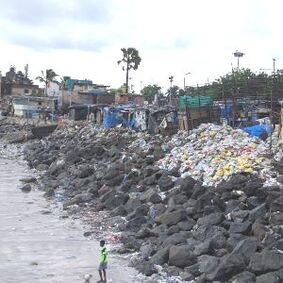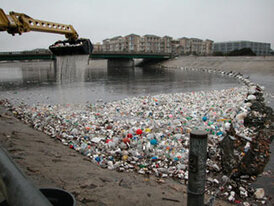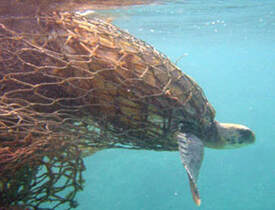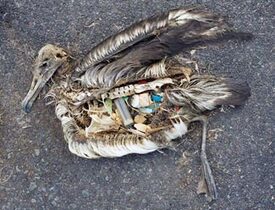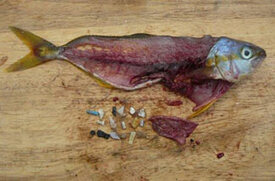Plastics in our Oceans
Plastic pollution is an environmental pandemic and considered one of three top concerns for ocean health. There is a growing awareness of the impacts of plastic pollution and some societies are beginning to take action to curb them. However, the increasing volume of plastics produced far out paces the efforts to reduce the damage they inflict on the natural world.
Plastics are an integral part of modern human existence. Over the last 75 years, civilization has created a legacy of plastic pollution on even the most remote and unpopulated shorelines of the planet. |
Even if we stop all plastic production today, the damage exists and the nature of plastic ensures that it will continue to exist for thousands of years. That is unacceptable, AND we can do something about it.
It is well known that polluted waterways are a major source of marine plastic. As rainwater washes out gutters and storm drains, it carries what humans leave behind. In addition to discarded trash, there is a dangerous cocktail of chemicals spilling into our oceans; petroleum products from our cars, pesticides and fertilizers from agriculture, manure from stockyards, and human waste and pharmaceutical residue from overloaded sewage systems.
It has been reported that 80% of marine plastic originates on land. Regardless of percentages, humans put it there and humanity needs to clean it up. Success will require international cooperation and communication.
It is well known that polluted waterways are a major source of marine plastic. As rainwater washes out gutters and storm drains, it carries what humans leave behind. In addition to discarded trash, there is a dangerous cocktail of chemicals spilling into our oceans; petroleum products from our cars, pesticides and fertilizers from agriculture, manure from stockyards, and human waste and pharmaceutical residue from overloaded sewage systems.
It has been reported that 80% of marine plastic originates on land. Regardless of percentages, humans put it there and humanity needs to clean it up. Success will require international cooperation and communication.
POP’SAmong chemical and biological toxins found in the ocean, scientists identified particularly harmful compounds called “persistent organic pollutants” (POPs). Exposure causes disruption of endocrine, reproductive, and immune systems.
Floating plastics attract POPs from surrounding water and accumulate and transport them around the globe in levels a million times higher than the surrounding sea water. Resulting birth defects are an environmental crime. |
EntanglementDerelict fishing equipment is also found in the world’s oceans. Plastic fiber nets are designed to catch and kill fish and take hundreds of years to weaken and break up. “Ghost Nets” are those nets that have been lost at sea. They can stretch for miles and present a lethal obstacle for animals that encounter them a navigational hazard to smaller shipping vessels for decades.
|
Plastic in the Food WebAs plastic breaks up into smaller pieces it makes its way deeper into the food web. Smaller and smaller animals mistake colorful plastic particles for food. The animals’ stomachs fill with plastic, which can’t be digested. These animals then slowly starve because they don’t feel hungry and stop taking in nutrition.
Seabirds like Laysan Albatross, are particularly vulnerable to plastic ingestion. Chicks are often fed plastic bits parents scavenge from the high sea, sometimes thousands of miles away. Their bellies fill up with plastic and they stop eating. Once the animal dies of starvation and decomposes, the plastic bits are released back into the environment to resume causing harm. |
Implications for HumanityPlastic pollution also reaches food consumed by humans. There is growing evidence that toxins associated with plastic in the oceans are responsible for human health problems such as brain, reproductive, and cardiovascular damage and cancers. These poisons cross all cultural and economic barriers.
|

